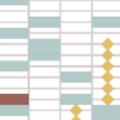Abstract
Background: SARS-CoV-2 antigen-detection rapid diagnostic tests (Ag-RDTs) have become widely utilized but longitudinal characterization of their community-based performance remains incompletely understood.
Methods: This prospective longitudinal study at a large public university in Seattle, WA utilized remote enrollment, online surveys, and self-collected nasal swab specimens to evaluate Ag-RDT performance against real-time reverse transcription polymerase chain reaction (rRT-PCR) in the context of SARS-CoV-2 Omicron. Ag-RDT sensitivity and specificity within 1 day of rRT-PCR were evaluated by symptom status throughout the illness episode and Orf1b cycle threshold (Ct).
Results: From February to December 2022, 5,757 participants reported 17,572 Ag-RDT results and completed 12,674 rRT-PCR tests, of which 995 (7.9%) were rRT-PCR-positive. Overall sensitivity and specificity were 53.0% (95% CI: 49.6–56.4%) and 98.8% (98.5–99.0%), respectively. Sensitivity was comparatively higher for Ag-RDTs used 1 day after rRT-PCR (69.0%), 4 to 7 days post-symptom onset (70.1%), and Orf1b Ct ≤20 (82.7%). Serial Ag-RDT sensitivity increased with repeat testing ≥2 (68.5%) and ≥4 (75.8%) days after an initial Ag-RDT-negative result.
Conclusion: Ag-RDT performance varied by clinical characteristics and temporal testing patterns. Our findings support recommendations for serial testing following an initial Ag-RDT-negative result, especially among recently symptomatic persons or those at high-risk for SARS-CoV-2 infection.
